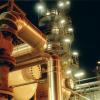Hello Medelamine,
In any Process in any industry, our view of it is usually theoretical and approximated to suit reality.
It is difficult to model exactly as in real life.
So when we consider these process, a lot of our calculations and understanding are based on the steady state of the system, since that is the state that is easily predictable and calculable. It is the state where all the respective properties being considered, such as speed, temp, heat flow, etc. do not vary with respect to time.
Concept
Most of our simulations though, are done for the purpose of emulating a real life scenario and predicting the outcome to a reasonable extent.
Now, prior to reaching the steady state, any system has to undergo the dynamic state where a lot of parameters vary depending on the time, and there are a lot of fluctuations and disturbances. These situations, are modelled using dynamic simulations, in order to account for the uncertainty in the process.
For steady states there should be no collection/accumulation of mass or energy over the time period. In dynamic states, this accumulation is possible and is accounted for using time dependent derivative terms.
Scenarios
Since time dependence has now been accounted for, numerous other scenarios can now be modelled, such as startup, shutdown of plants, where a lot of variables vary unpredictably initially.
Scenarios where there is a change in one/more of the parameters in between the process, also, can now be modelled where the transition occuring due to that parameter change is also accounted for. In steady state we are unable to account for all this since the basic assumption itself is that the system has already achieved steady state prior to calculation.
Some examples where we might need dynamics include, compressor startup and shutdown, time dependent heat and mass transfer processes, computational fluid dynamics etc.
I am sure you have heard of the Navier stokes equations, a set of time dependent equations that can have dynamic variants as well.
There are innumerable cases where dynamic simulation might be required. It need not be restricted to only startup and shutdown processes. You might, in your term of work, encounter processes where rates of production/ consumption, flow etc. might change with time. In all those situations too, dynamic simulation is equally applicable.
Dynamic simulation is also used in electrical processes, mechanical analyses etc. as well so it is already an integral tool in the real world today.
Regards,
Shantanu
Edited by shantanuk100, 18 November 2015 - 12:59 AM.

 FB
FB










